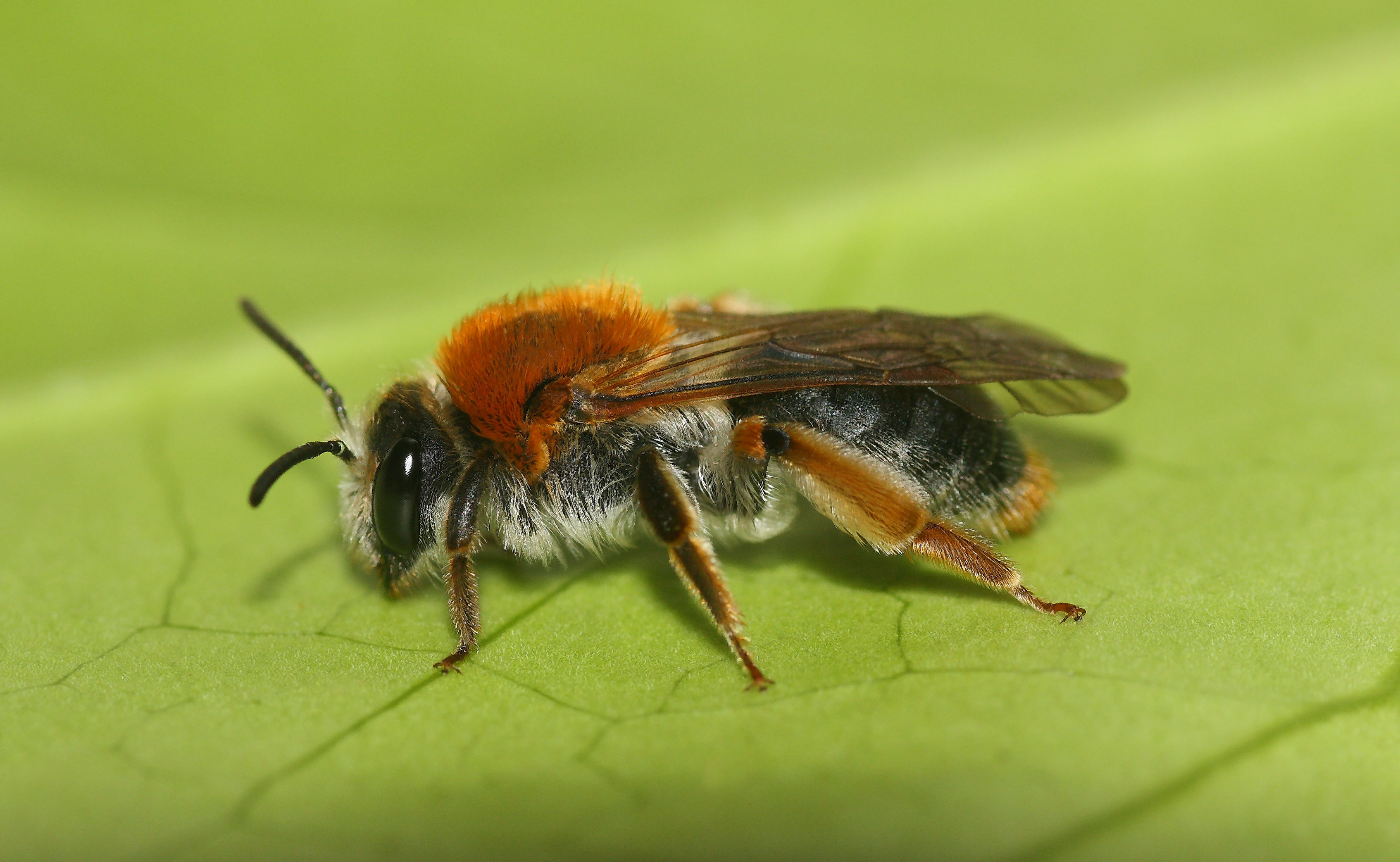DESCRIPTION: Length up to 13mm. The sexes of this species are notably different with females (as above) sporting a bright, foxy-brown pile on top of the thorax and a similarly coloured tuft of hairs on the tip of the black and shiny abdomen. The tergites on the abdomen are seen to be coarsely punctated. The face sports white hairs and pale facial foveae and the hind tibia are hairy and yellow. Males are much less distinctive and somewhat scruffy little tinkers. They are best recognised by the buff pile on the face and sides of the thorax and the more orangey hairs on the top of the thorax and tip of the abdomen. The orange tibiae usually have a dark patch beneath about halfway along. BEHAVIOUR: Nests can be found singly or in loose aggregations. Nests can be parasitised by the cleptoparasitic bee Nomada ruficornis. Flowers visited by adults include those of Cow Parsley, Dandelion, Greater Stitchwort, Wood Anemone, Willow; Gorse; Hawthorn and fruit trees amongst others. DISTRIBUTION: A well distributed species found through the UK. HABITAT: Found in a variety of habitats including urban areas. PERIOD: March to July.

